I hope you’ve enjoyed reading about my Tibet travel experiences as much as I have enjoyed writing about them. After my last story about how to travel overland in Tibet was published, I realized that I still had a slew of great photos that I hadn’t used. I decided to do something a little unorthodox (for me) and create a photo travelogue of my journey through Tibet, from Lhasa to the Nepal border. So, here goes. Hope you enjoy.
Potala Palace in Lhasa, Tibet, former home to the current Dalai Lama, framed by soaring mountains
View of the lake and city park from the top of the Potala Palace in Lhasa, Tibet
Inner courtyard at Jhokhang Temple in Lhasa, Tibet’s holiest and mot famous temple
Pilgrims perform a Kora – a clockwise circumambulation of Jhokhang Temple
Entrance to Sera Monastery in Lhasa, one of Tibet’s largest monasteries and a prime location for famous monastic debates
Tsochen Temple, the main assembly hall at Drepung Monastery in Lhasa, Tibet
Tibetan prayer flags flap in strong winds at the Manla Reservoir overlook in southern Tibet
Tibetan woman prepares to milk her cow, which is tied up in front of her home in Gyantse, Tibet
Old Town of Gyantse, Tibet, with view to Palkor Choeda Monastery
Toddler peers from the window of a traditional Tibetan home in the Old Town area of Gyantse, Tibet
Interior of the ancient assembly hall at Palkor Choeda Monastery in Gyantse, Tibet
Golden Stupa inside Palkor Choeda Monastery in Gyantse is said to hold a relic of the mother of the founder of the monastery
The magnificent Kumbum Stupa at Palkor Choeda Monastery in Gyantse, Tibet
Strolling through the streets of Shigatse, Tibet
Tashilhunpo Monastery in Shigatse, Tibet. Even viewed from a plaza across the street, it is so massive that the entire monastery isn’t visible in the photo
Main temple and Great Wall at Tashilhunpo Monastery in Shigatse, Tibet
85 year-old man from the Shigatse region of Tibet visits Tashilhunpo Monastery to perform a circumambulation of a revered stupa on the grounds
Ancient hilltop ruins gaze down upon Phuntsoling Monastery, ancient in its own rite
Monks at Phuntsoling Monastery in central Tibet are delighted to welcome visitors
Sakya Monastery in Sakya, Tibet
The Everest Sunshine Hotel, a yak-skin tent at Everest Base Camp
Woman prepares dinner for our group inside The Everest Sunshine Hotel, a yak-skin tent at Everest Base Camp
View on the road to Peiko Tso Lake in southern Tibet
Annapurna Himalayas seen from the Tibet side as we descend from Kyung Tang Pass Overlook toward the Nepal border
Author’s note: After many years of trying to visit Tibet, I was finally successful with the assistance of Himalaya Journey, an absolutely fantastic company that specializes in small group tours of Tibet, Bhutan, Nepal, and India.

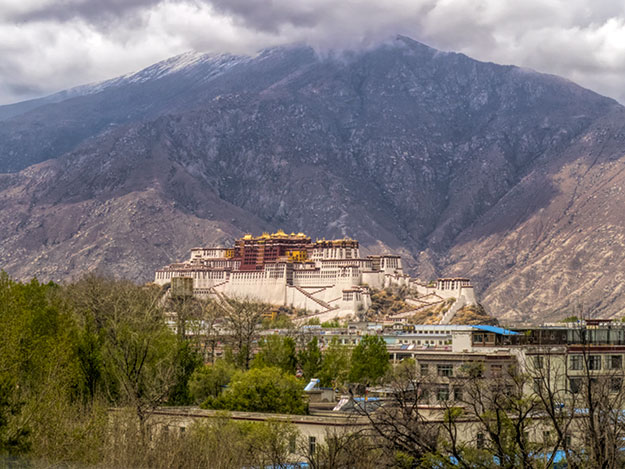
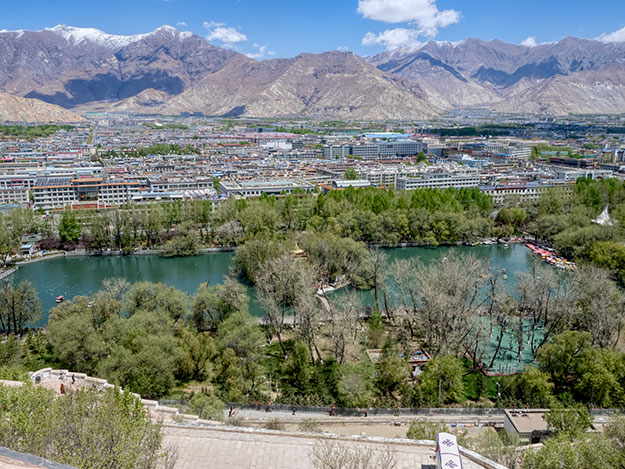
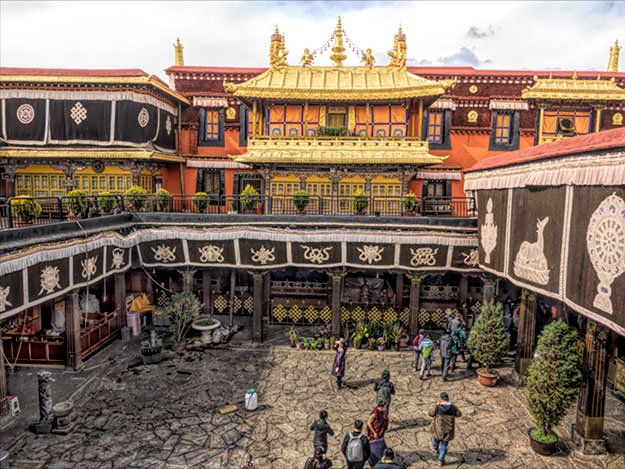
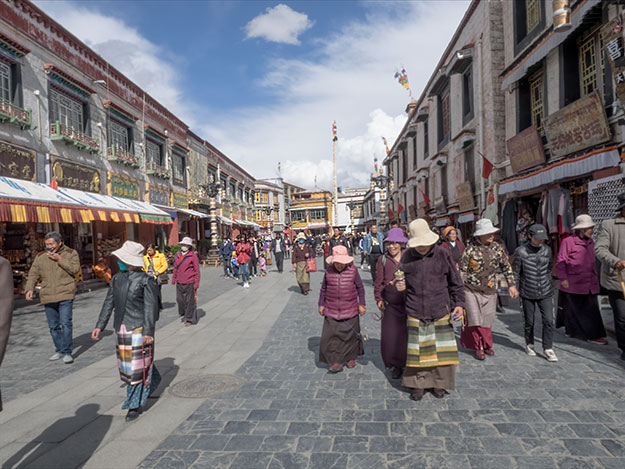

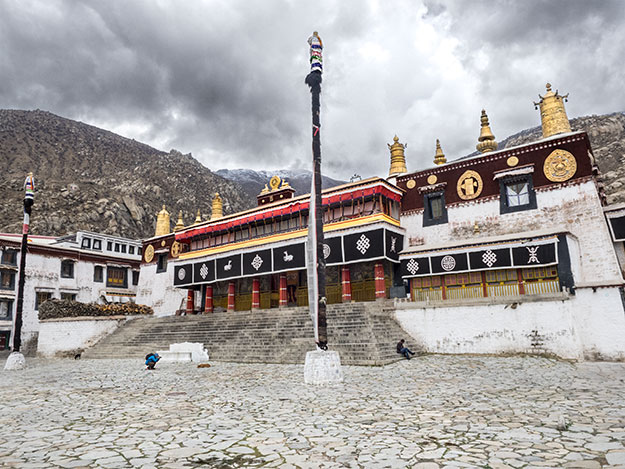

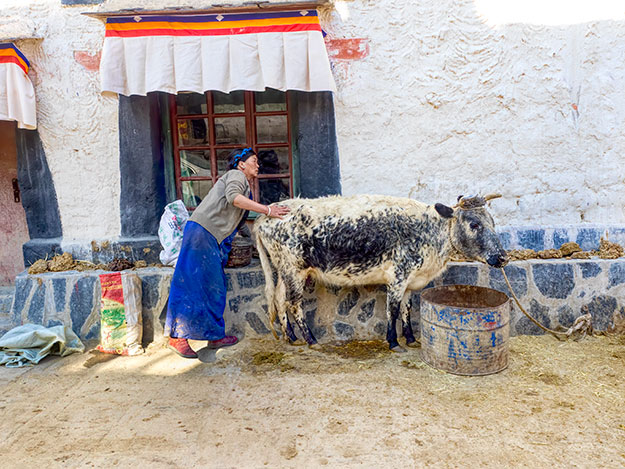

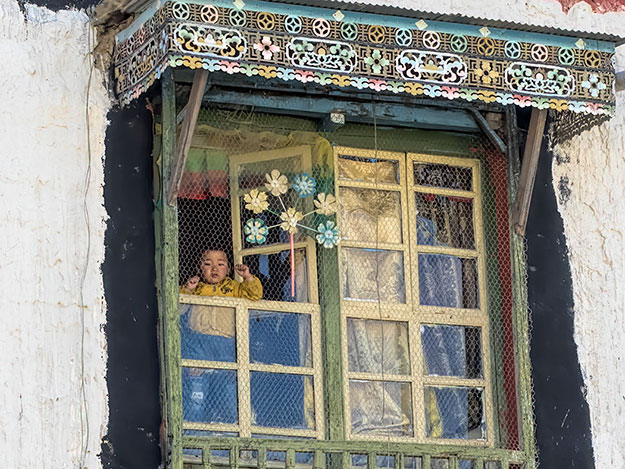
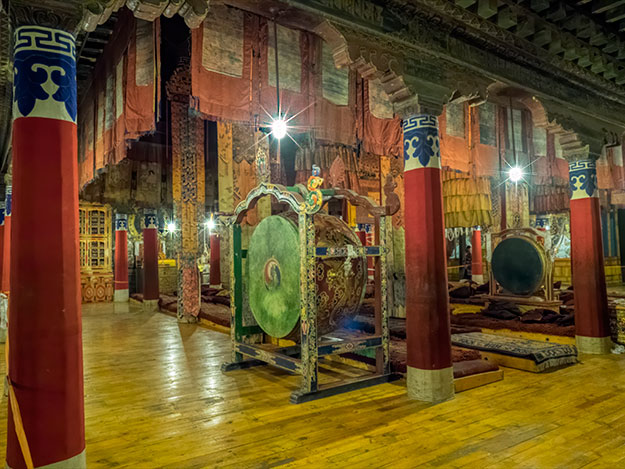
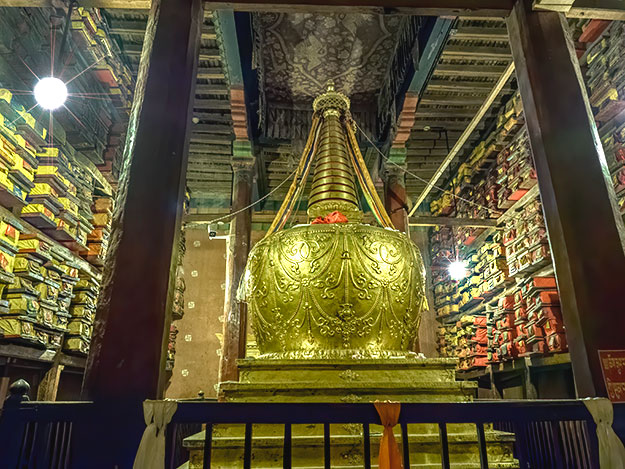
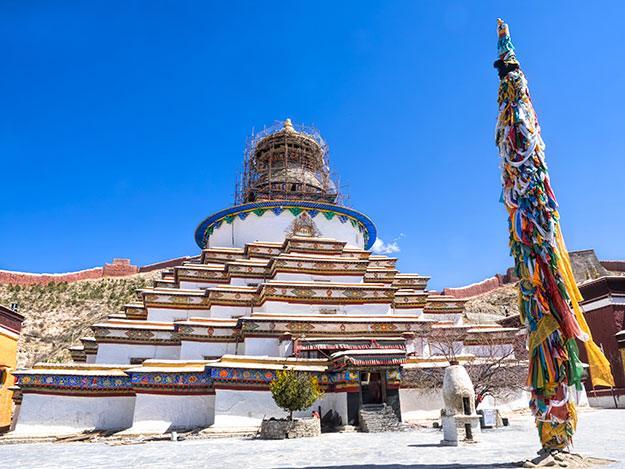
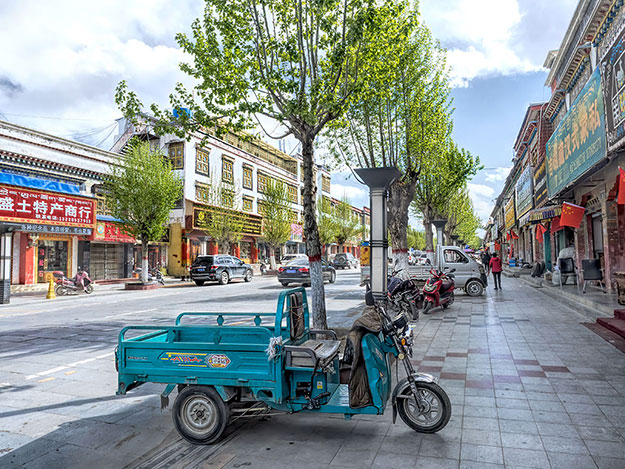

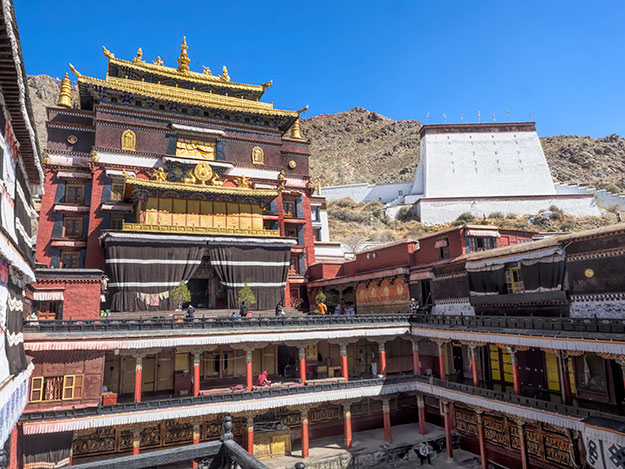
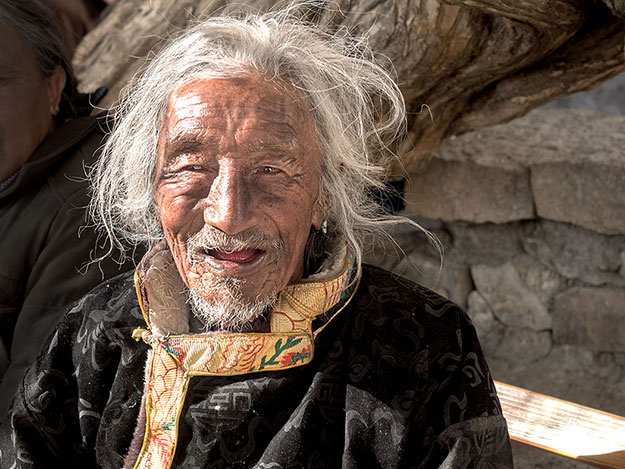
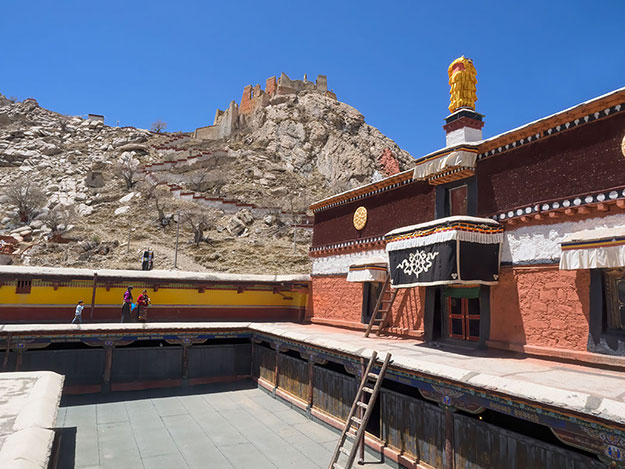
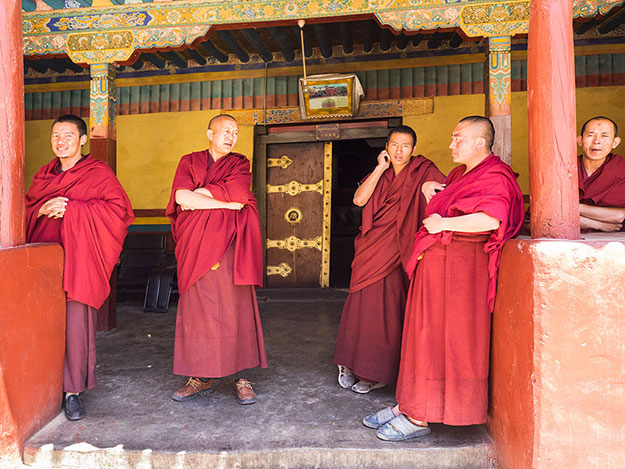
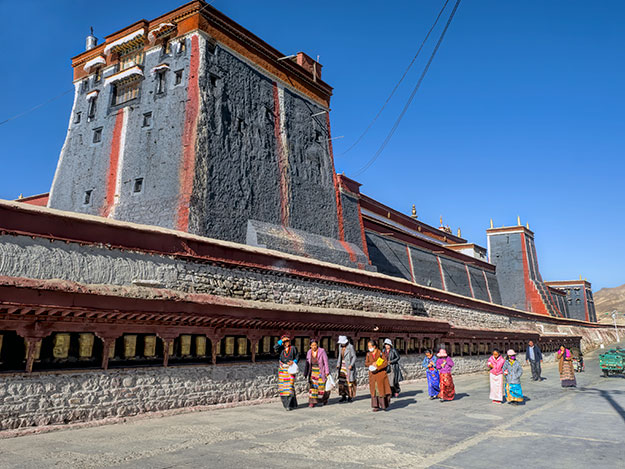
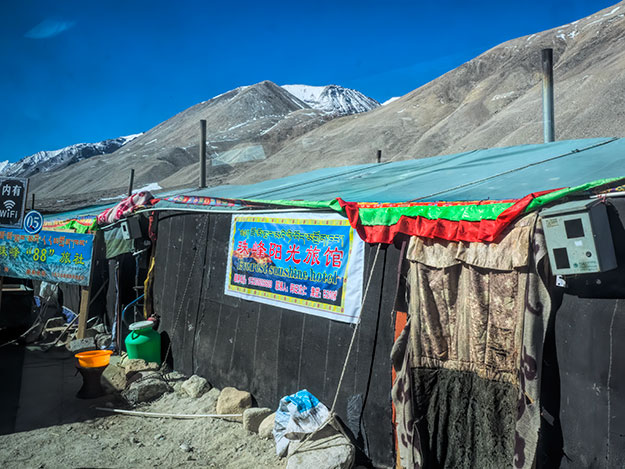
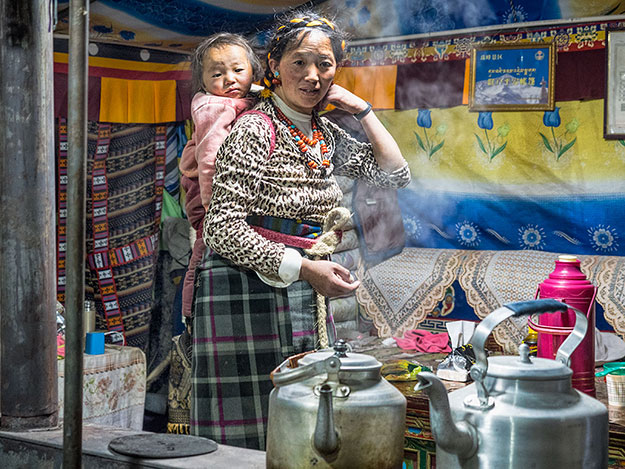
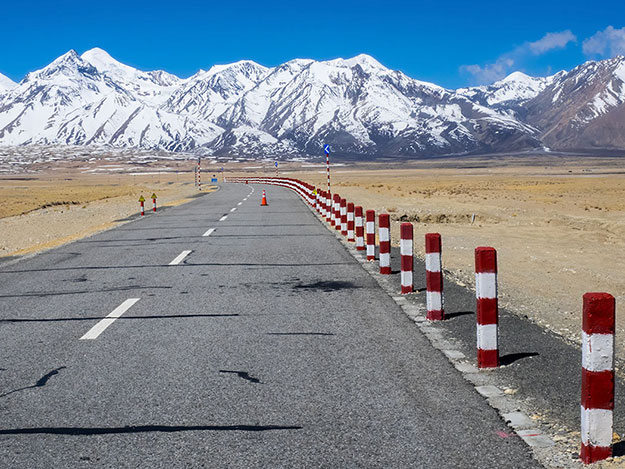
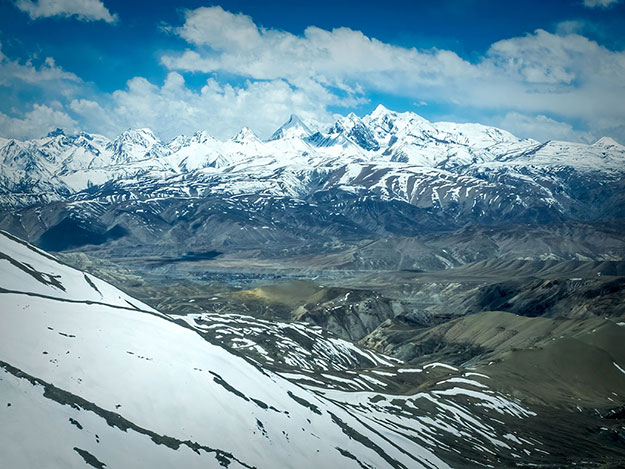
I just ran across your website and was fascinated to see your photos. I visited in 1984 when tourism was just beginning. The dirt road to Lhasa was just barely passable. The people were so friendly and wore their traditional dress. We saw so many pilgrims circumambulating around the Jokhang monastery. It is just so sad what the Chinese have done to that culture. We also were able to visit Shigatse and that was as far as we could go in 1984. I see the changes from your street scenes but the monasteries look very much the same. Glad they have preserved them. China was very different in 1984. The people were still wearing the Mao jackets and riding bicycles.
Hello Barbara,
I was reading about the Durje Shudgen controversy and stumbled across your video about the debating Tibetan monks. I am fascinated by your photos & experiences and looked up your entire Tibetan series — which began with he 2008 Free Tibet post. Having seen all the colorful pictures, and what I assume to be ethnic Tibetans in their traditional way of life, I can’t help but ask, what is it really like? Are they free or are they oppressed?
You have made Tibet one of the must-go places for myself because the post-communist picture painted of it is just so different to what I saw in your photos!
Thank you
Hi Yuan Yao. Thank you so much for your comment and your kind words. My aim is always to induce people to travel more so that we end the concept of “otherness.” So it meant a lot to me that you read all my Tibet stories.
As to your question about Tibet, it’s really exactly like I’ve painted it with my words. However, the second question is much more difficult. Are they oppressed? It’s hard for me to really know. My excellent tour company made every effort to connect us with locals, and we did have free time in Lhasa to wander freely and speak to local people, very few Tibetans speak English, so conversations were of necessity limited. Those who could speak English were lovely and welcoming, but I did not try to speak with them directly about politics or the government, because I did not want to get anyone into trouble.
It is clear that China has poured billions of dollars into the Tibet region. The roads are all newly paved, the city centers have been completely renovated, and cell phone service was available in even the remotest of areas. I was told that the security forces are about 50% Tibetan and 50% Han Chinese, so the Chinese government has provided more jobs and opportunity to Tibetans. Certainly, life is much easier for them than it was before the Chinese invasion and occupation.
However, I was also aware of the extreme level of surveillance that exists in Tibet. I assumed that I was being monitored at all times. There are cameras everywhere, and Chinese security troops stationed at every important point. In front of the main monasteries and tourist sites, they make rounds with a steel contraption that looks like a giant tennis racquet. It is approximately six feet tall, with a large hook or hoop at the end. Apparently, it allows police to seize burning protestors by the waist or neck. The mere fact that they carry such a tool means that there are still incidents of monks self-immolating (setting themselves on fire in protest). I did hear that Tibetans, by law, must display the Chinese flag from the roofs of their homes. And if they don’t, they can be fined or even jailed. Also, the government is cracking down on the nomadic lifestyle, in some cases prohibiting the seasonal movement of yak herds that are so important to Tibetan culture. But whether or not Tibetans believe this level of scrutiny and oppression is worth the improved lifestyle was simply impossible to know. To this day, I am conflicted about it.
Fantastic photos, Barbara! This photo travelogue really shows the beauty and mystique of Tibet. Thank you for this unique post!
As always Crystal, you are so kind. Can’t wait to see you – hope you’re still coming this winter????
Lovely pics. The scenery is amazing. I would like to visit the place.
I hope you get to go Evans. Tibet is incredible.
Great shots, did not realize it was a difficult place to visit, glad you made it!
Hi Graeme. LOL – it wasn’t difficult, once I found a tour company that knew what they were doing.
After seeing your photos, I feel like I’ve just visited Tibet. Thanks, Barbara.
You’re welcome Betty. So glad you enjoyed them.
From your photos, Barbara, I feel all the culture of this beautiful and treasured place. You’re very courageous. Many thanks 🙂
Hi Linda. Thanks you for the lovely compliment – so glad you enjoyed my photos.
These are all so very beautiful. So grateful that you decided to show them all. What a treasure/gift for everyone, like me, who would never have seen these places if you had not provided them for viewing. We are all truly blessed beyond measure. Thank You!!!!
Thank YOU Maraine. Comments like yours are what keep me going 🙂
Some friends and I are planning a commercial tour from Kathmandu to Lhasa in about 3 weeks.Great timing! Thank you.
You’re welcome Charlotte. I’m sure they’ll have a fantastic time. Tibet is just fascinating.
Wonderful photos – Thank You!
You’re welcome Ric.
Absolutely breathtaking. Have some friends from the Joliet Bicycle Club who did a tour on bicycle a few years ago. One of the members is from Nepal. He led the group. Very adventurous!! Thanks for sharing!!! Do you ever come back here to visit? Would love to see you. Jean
Hi Jean. How wonderful to hear from you. If you get an opportunity to see Tibet, definitely do it. So fascinating. I hardly ever come back to the U.S. Sad to say, but I prefer the culture of Europe and Asia.